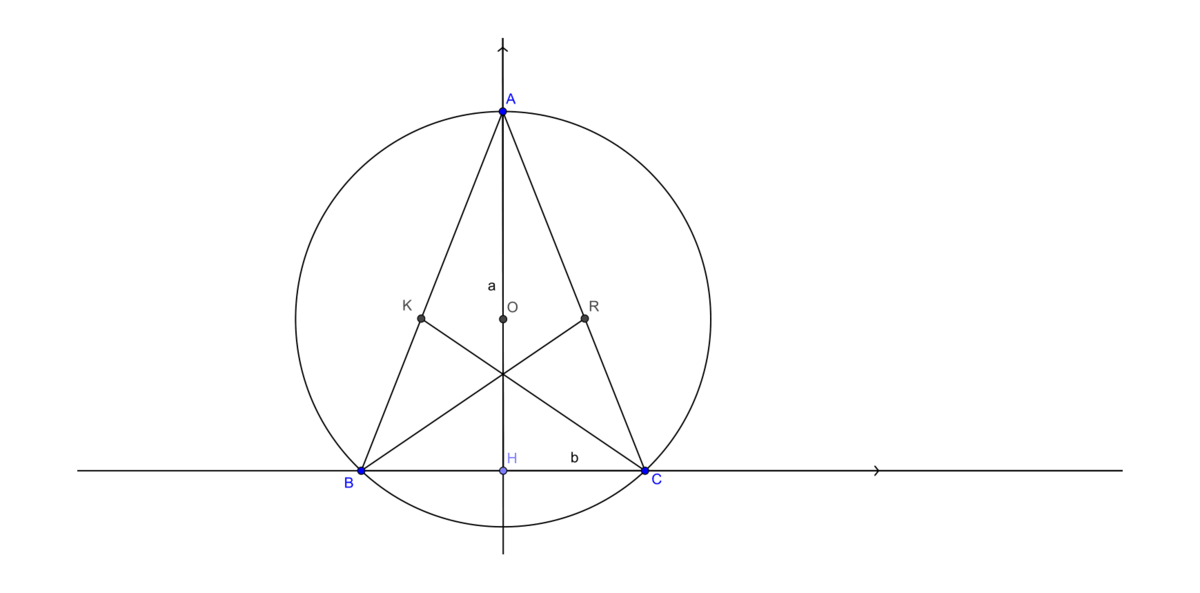A geometry problem by Filippo Olivetti
Let A B C an isosceles triangle with B C as base. Let r , s be the bisectors of ∠ B C A and ∠ C B A rispectivly, and let r ∩ A B = K , s ∩ A C = R . If O is the circumcentre of A B C , then R , K , O are allineate. We know that O A = 4 2 : find the square of the altitude relative to B C .
The answer is 5292.
This section requires Javascript.
You are seeing this because something didn't load right. We suggest you, (a) try
refreshing the page, (b) enabling javascript if it is disabled on your browser and,
finally, (c)
loading the
non-javascript version of this page
. We're sorry about the hassle.
2 solutions

I'll use analytic geometry to solve this problem.
Let A H = a and C H = b , such that A ( 0 , a ) , C ( b , 0 ) . Using the Pythagorean theorem, we get: ( a − 4 2 ) 2 + b 2 = 4 2 2 since O A = 4 2 from hypothesis. Let r A C and r A B the lines that pass through A C and A B rispectively. Then r A C : a x + b y − a b = 0 r A B : a x − b y + a b = 0 The bisector is the locus of the points that are equidistant from two lines. So the bisector of ∠ A B C is: a 2 + b 2 a x − b y + a b = y In order to find K , we put in a system the bisector and r A C : { a x − b y + a b = y ⋅ a 2 + b 2 a x + b y − a b = 0 Solving the system we get: y = a 2 + b 2 + 2 b 2 a b For symmetry, R have the same ordinate; since R , K , O are allineate from hypothesis a − 4 2 = a 2 + b 2 + 2 b 2 a b Using the equation ( a − 4 2 ) 2 + b 2 = 4 2 2 we have found before, we get: a 2 = 3 ⋅ 4 2 2
My approach was to look at the ratio of A R and R C which gave me a quadratic equation to solve.
In Filippo's diagram, it isn't difficult to prove that BK=KR=2KO. Let KO=x; then AK=√(42²+x²) and (AK)(KB)=(42-x)(42+x) which gives us 2x√(42²+x²)=42²-x² yielding x=14√(6√3-9). Further, AH/AB=AO/AK which means:AH/(√(42²+x²)+ 2x)=42/√(42²+x²). Plug in the value of x and solve for AH to get AH=42√3 or AH²=5292.